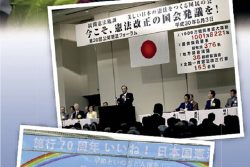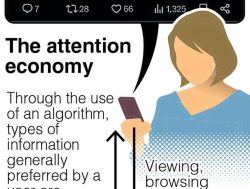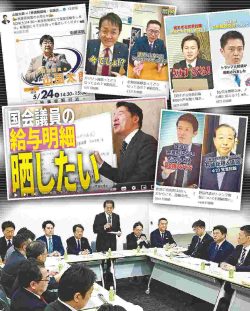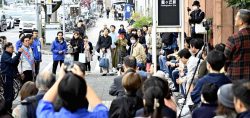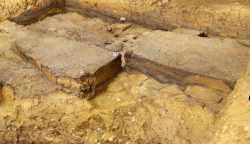Hiroshima Witnesses: Hibakusha Win Nobel Prize / A-bomb Survivors Tell Their Stories, Show Their Scars; Urgent Sense of Mission Survives into Old Age
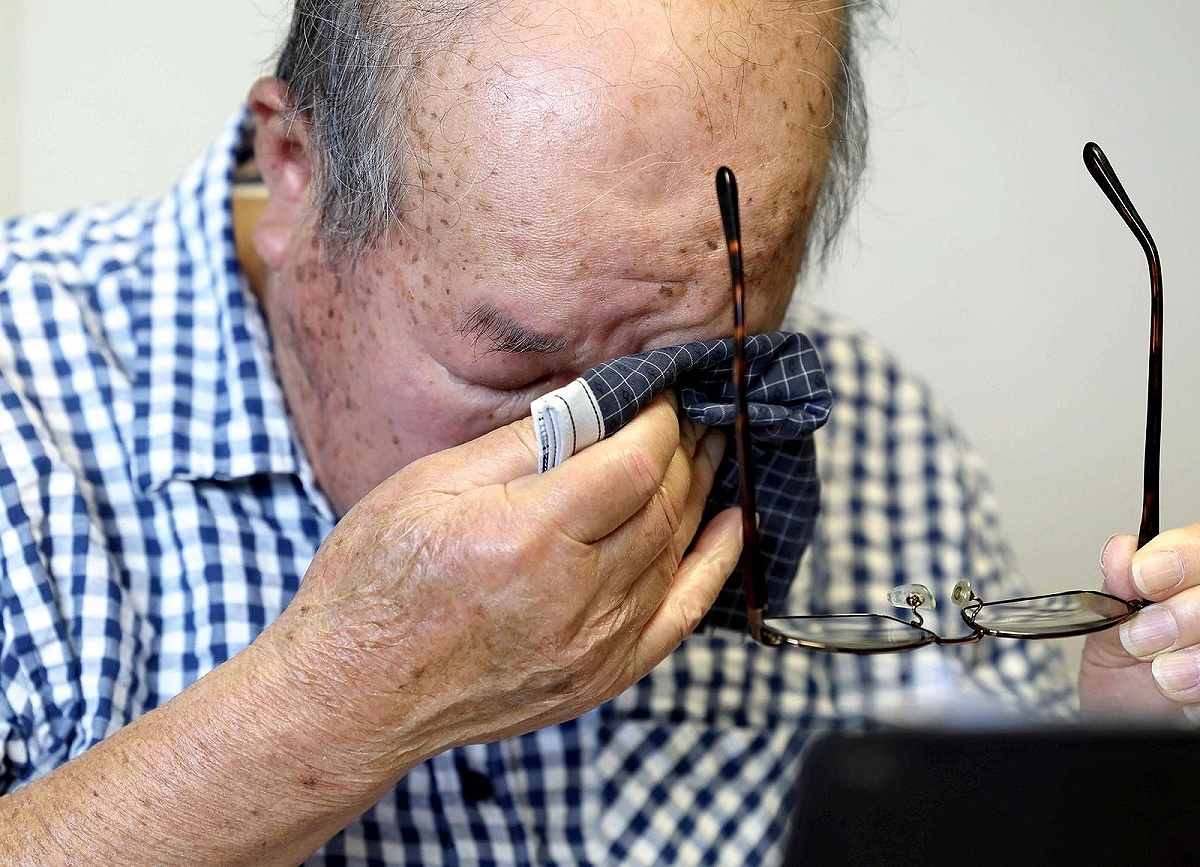
Hidankyo Co-Chairperson Shigemitsu Tanaka wipes away tears as he attends a news conference online from Nagasaki on Oct. 12 afternoon.
The Yomiuri Shimbun
6:00 JST, October 20, 2024
The Nobel Peace Prize was awarded to Nihon Hidankyo, or the Japan Confederation of A- and H-bomb Sufferers Organizations, a national organization of groups of those who survived the 1945 atomic bombings of Hiroshima and Nagasaki. These “historical witnesses” have called for the abolition of nuclear weapons over the past 68 years from Japan, the only country to have suffered atomic bombings.
Next year will mark the 80th anniversary of the atomic bombings of the two cities. Looking back on the steps taken by the atomic bomb survivors, known as hibakusha, we will consider the challenges of the coming age without them in a series of articles.
***
“I’m very happy that we’ve finally reached this point,” Hidankyo Co-Chairperson Terumi Tanaka, 92, said at a press conference in Tokyo on Oct. 12, a day after the group’s Nobel Peace Prize win was announced.
When the atomic bomb was dropped in Nagasaki, Tanaka was in his house 3.2 kilometers from the hypocenter. Five family members, including his aunt and grandfather, died as a result of the bombing. He joined Hidankyo activities in the 1970s, eventually devoting half of his life to the initiative.
Steps taken by hibakusha are marked by a history of agony. The atomic bombs dropped on Hiroshima and Nagasaki in August 1945 killed a total of 210,000 people by the end of that year, and those who survived have suffered from the aftereffects of the bombings and often kept silent about their experiences for fear of discrimination and prejudice.
The 1954 Daigo Fukuryu Maru incident, named for a Japanese fishing boat whose crew members were exposed to radiation from a U.S. hydrogen bomb test, was a turning point. Calls for nuclear abolition gained momentum, and the World Conference against Atomic and Hydrogen Bombs was held in Hiroshima the following year and in Nagasaki in 1956.
With the slogan “No more Hibakusha,” Hidankyo was launched after a decade in which atomic bomb survivors had largely kept their silence.
The Cold War
The group initially put its campaign’s main focus on achieving relief for survivors, who were suffering from the atomic bombs’ aftereffects and also from discrimination. However, out of a sense of crisis over the increasingly tense international situation during the Cold War, hibakusha began showing the injuries that the bombings had left on their bodies and speaking to the world about the cruelty of nuclear weapons.
“No more hibakusha,” said Senji Yamaguchi, then Hidankyo leader, at the second Special Session on Disarmament of U.N. General Assembly at U.N. Headquarters in New York in 1982. Yamaguchi, who died in 2013 at the age of 82, spoke of the scars left on his body and the cruelty of the atomic bombs.
The special session was the first time for hibakusha to address the United Nations. Also speaking was Sumiteru Taniguchi, who was 16 years old when he suffered injuries from the atomic bomb in Nagasaki at a location 1.8 kilometers from the hypocenter. He called on the international community to abolish nuclear weapons, showing a photo of his back, which was burned red from heat rays. He died in 2005 at the age of 88.
Shigemitsu Tanaka, 83, a Hidankyo co-chairperson who experienced the atomic bombing in Nagasaki, had an unforgettable experience.
Shigemitsu Tanaka visited the United States in 2005 for the Nuclear Non-Proliferation Treaty review conference with Taniguchi. Because of the keloid scars on his back, Taniguchi was unable to lean back in a chair, so he kept moving around without taking his jacket off, even in the middle of summer. Tanaka said this experience motivated him to do his best, thinking, “I have to carry on my seniors’ determination to create a peaceful future by our own power.”
“I’d like to thank my seniors,” said Tanaka, who took part in Oct. 12’s news conference online.
Campaigning with oxygen tank
Grassroots activities led to Japan’s enactment of the Atomic Bomb Survivors’ Assistance Law in 1995 and the U.N. adoption of the Treaty on the Prohibition of Nuclear Weapons in 2017.
Sunao Tsuboi suffered severe burns in the atomic bombing in Hiroshima when he was 20. As a junior high school teacher, Tsuboi spoke out about the inhumanity of the atomic bombing and became to be known as “Pikadon Sensei,” or atomic bomb teacher. After retiring from teaching, he led the group’s campaign as the “face of Hiroshima.” He died in 2009 at the age of 96.
Hiroshi Shimizu, 82, from Hiroshima, experienced the atomic bombing when he was 3. As soon as he heard the news of the group’s Nobel Prize win, he recalled Tsuboi’s dedication to passing on his experience to future generations. Tsuboi once gave a good scolding to Shimizu, who was at first reluctant to talk about his own experiences. “You shouldn’t say that you aren’t qualified to speak about it. You also must speak up,” Tsuboi reportedly told Shimizu.
With Tsuboi’s encouragement, Shimizu began giving testimony about his experiences at the age of 68. Following in Tsuboi’s footsteps, he still continues the campaign, now toting an oxygen tank, even after he was hospitalized for three months last winter due to congestive heart failure and other health problems.
The world today is facing a high threat of nuclear weapons, as seen in Russia’s invasion of Ukraine. The Nobel Committee called the hibakusha “historical witnesses” and praised them for telling their personal stories and having “contributed greatly to the establishment of the nuclear [arms use] taboo.”
“I steeled myself as I felt like the international community has told me that hibakusha are the only ones who can truly warn about the threat of nuclear weapons,” Shimizu said. “It’s the right time for us to convey the tragedy of atomic bombings to the world.”
The average age of the atomic bomb survivors is over 85. Despite this, they will not give up on realizing a world without nuclear weapons.
Popular Articles
Popular articles in the past 24 hours
-

BOJ Gov. Ueda: Highly Likely Mechanism for Rising Wages, Prices W...
-
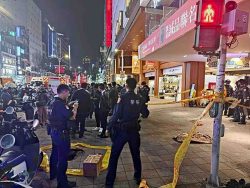
3 Killed in Taiwan Knife Attack, with the Suspect Later Falling t...
-

Japan's Defense Ministry to Launch New Division to Boost Space Se...
-
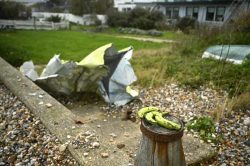
U.K. Public Urged to Keep Eyes Peeled for Washed-up Bananas
-

Santas in Japan Hand Out Christmas Gifts to People Affected by Ma...
-

AI Personalizes Foreign Language Lessons in Pilot Projects, Inspi...
-

LDP, DPFP Reach Deal to Hike Taxable Income Threshold to ¥1.78 Mi...
-
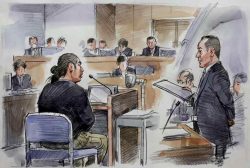
Court Hears Arguments on Weight of Yamagami's Background in Sente...
Popular articles in the past week
-

University of Tokyo Professor Discusses Japanese Economic Securit...
-

Tsukiji Market Urges Tourists to Avoid Visiting in Year-End
-

Israeli Tourists Refused Accommodation at Hotel in Japan’s Nagano...
-

China to Impose Sanctions on Shigeru Iwasaki, Former Head of Japa...
-

Japan to Support Central Asian Logistics Route That Bypasses Russ...
-

Speed Skater Yukino Yoshida Clinches Ticket to Milan
-

U.S. Senate Resolution Backs Japan, Condemns China's Pressure
-

Kenta Maeda Joins Rakuten Eagles; Returns from American MLB to Ja...
Popular articles in the past month
-

Keidanren Chairman Yoshinobu Tsutsui Visits Kashiwazaki-Kariwa Nu...
-

Imports of Rare Earths from China Facing Delays, May Be Caused by...
-

Japan Exports Rise in October as Slump in U.S. Sales Eases
-

University of Tokyo Professor Discusses Japanese Economic Securit...
-

Japan Pulls out of Vietnam Nuclear Project, Complicating Hanoi's ...
-

Govt Aims to Expand NISA Program Lineup, Abolish Age Restriction
-

Blanket Eel Trade Restrictions Rejected
-

Key Japan Labor Group to Seek Pay Scale Hike
"Society" POPULAR ARTICLE
-

M4.9 Earthquake Hits Tokyo, Neighboring Prefectures
-

M7.5 Earthquake Hits Northern Japan; Tsunami Waves Observed in Hokkaido, Aomori and Iwate Prefectures
-

Tsukiji Market Urges Tourists to Avoid Visiting in Year-End
-

Israeli Tourists Refused Accommodation at Hotel in Japan’s Nagano Pref., Prompting Protest by Israeli Embassy and Probe by Prefecture
-
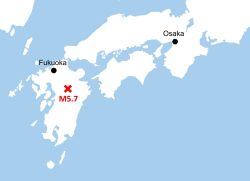
M5.7 Earthquake Hits Japan’s Kumamoto Pref., Measuring Upper 5 Intensity, No Tsunami Expected
JN ACCESS RANKING
-

Keidanren Chairman Yoshinobu Tsutsui Visits Kashiwazaki-Kariwa Nuclear Power Plant; Inspects New Emergency Safety System
-

Imports of Rare Earths from China Facing Delays, May Be Caused by Deterioration of Japan-China Relations
-

University of Tokyo Professor Discusses Japanese Economic Security in Interview Ahead of Forum
-

Japan Pulls out of Vietnam Nuclear Project, Complicating Hanoi’s Power Plans
-

Govt Aims to Expand NISA Program Lineup, Abolish Age Restriction


